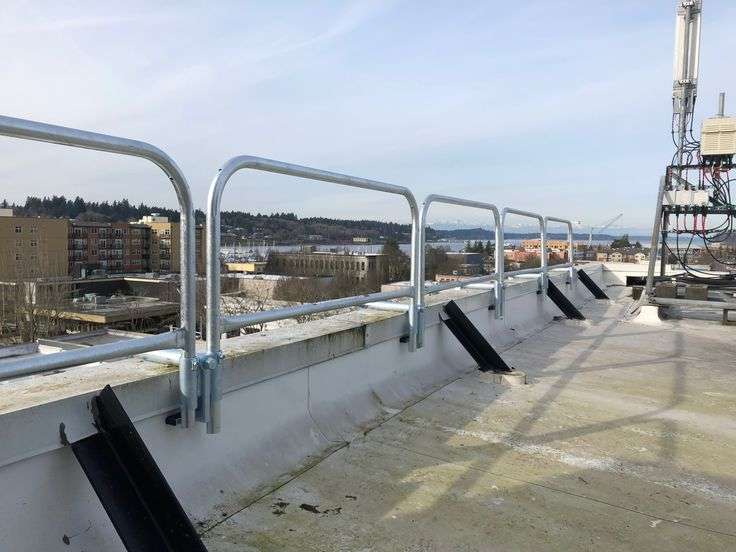Parapet Walls Types and Uses have been integral to architecture for centuries, evolving from their historical use as defensive battlements in castles and walled cities. Originally designed for protection against external threats, parapet walls have transformed into decorative and functional elements in modern construction. The various Parapet Wall types, such as Embattled, Plain, Perforated, Paneled, Sloped, Flat, Curved, and Stepped, offer diverse options based on appearance and configuration. Modern variations, including Fiber-glass parapets and those with steel or glass railings, contribute to safety, aesthetics, and privacy. The uses of Parapet Walls extend from providing an aesthetic look to ensuring safety on rooftops and preventing the entrance of dust to concealing equipment and defending against wind loads. With considerations like height, thickness, moisture prevention, ventilation, and insect prevention, Parapet Walls continue to be crucial in both historical and contemporary architectural designs.

Types and Uses of Parapet Walls
Types of Parapet Walls:
Embattled Parapet Walls:
- Originally used in fortified structures like castles.
- Characterized by a teeth-like structure for defensive purposes.
- Examples include the Great Wall of China.

Plain Parapet Walls:
- Commonly seen in houses.
- Serve as a vertical extension at the edge of the roof for safety.
- Typically adorned with concrete coping and corbels.
Perforated Parapet Walls:
- Feature decorative perforations, such as floral patterns or circles.
- Enhance aesthetic appearance while maintaining safety.

Paneled Parapet Walls:
- Ornamental walls with decorative panels.
- Cost-effective alternative without perforations.
Sloped Parapet Walls:
- Designed with a slope to dispel rainwater.
- Protect roofs from leaking and seepage.

Flat Parapet Walls:
- Simple and common design for houses.
- Little to no slope, suitable for various architectural demands.
Curved Parapet Walls:
- Also known as arched parapet walls.
- Ideal for smaller houses, providing an appearance of height.

Stepped Parapet Walls:
- Mostly decorative, resembling a flight of stairs.
- Enhance curb appeal and contribute to the building’s elevation.
Modern Types of Parapets:
- Fiber-glass parapets
- Parapets with steel or glass railings
- Composite parapet walls (combination of glass or steel railings in pierced portions of perforated parapet walls)

Uses of Parapet Walls:
Aesthetic Enhancement:
- Improve the overall appearance of the structure.
- Provide various design options to fit architectural demands.
Safety:
- Create a protective barrier for individuals on balconies or rooftops.
- Essential for houses and buildings to meet safety standards.

Privacy:
- Serve as a barrier to maintain privacy, especially in close residential spaces.
- Block the view of stored materials or equipment on rooftops.
Wind Protection:
- Protect buildings from high wind loads, thunderstorms, and hurricanes.
- Reduce pressure differences at roof edges.

Prevention of Moisture and Roof Damage:
- Deter moisture by including protective measures like waterproof membranes.
- Guard against potential roof collapse due to pressure differences.
Equipment Concealment:
- Hide machinery or equipment on rooftops.
- Contribute to a cleaner and more organized appearance.
Defensive Measures:
- In military areas, perforated parapets can serve defense purposes.
- Offer protection against potential threats.

Factors to Consider When Building Parapet Walls:
- Height:
- Parapet walls should be at least 3 feet high for safety.
- Thickness:
- Maintain a minimum thickness of 9 inches for durability.
- Moisture Prevention:
- Ensure wall-penetration flashing under the mortar bed.
- Implement proper venting to prevent moisture seepage.
- Ventilation:
- Provide venting space for each wall cavity.
- Use round soffit vents for rainwater dispersion.
- Insect Prevention:
- Cover unnecessary venting holes to prevent insect entry.
In conclusion, parapet walls have evolved from their historical roots to become versatile elements in modern construction. Their aesthetic, protective, and functional qualities make them a crucial consideration in architectural design and building safety. Whether enhancing the appearance of a house or providing a safety barrier on a rooftop, parapet walls continue to play a significant role in the world of construction.

